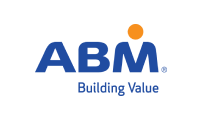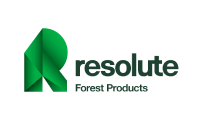For sustainability professionals, this moment demands more than technical know-how—it requires robust ESG (Environmental, Social, and Governance) expertise. With Canada committed to net-zero by 2050 and new federal rules on climate disclosures, ESG training is no longer optional.
Why LNG Needs ESG Now More Than Ever
Shell promotes LNG as a transition fuel, but scrutiny is intensifying. Canada’s Oil and Gas Emissions Cap Framework targets a 42% reduction below 2019 levels by 2030. This puts LNG projects under pressure to prove their climate credibility.
Emissions Case Study: The LNG Canada project anticipates emissions of about 4 megatonnes CO₂e annually, according to its Environmental Assessment Certificate. That’s more than 800,000 vehicles’ worth of emissions every year.
Indigenous Engagement: A Legal and Ethical Imperative
Over 25 Indigenous communities are located near key LNG corridors in British Columbia. Successful projects—like Coastal GasLink—have involved complex Impact Benefit Agreements (IBAs), but not without controversy.
From my experience supporting IBA negotiations in northern BC, genuine engagement goes beyond consultation. ESG practitioners must understand Indigenous governance, consent rights under UNDRIP, and the Duty to Consult framework under Canadian law.
ESG Training: Closing Canada’s Capacity Gap
The Certified Sustainability (ESG) Practitioner Program by the Centre for Sustainability and Excellence (CSE) equips professionals with tools to:
- Align with CSSB, GRI and ISSB standards
- Evaluate physical and transitional risks
- Lead stakeholder engagement processes, including Indigenous rights
- Integrate biodiversity, climate, and governance metrics into reports
Addressing Criticism and Building Trust
Critics argue LNG expansion contradicts climate goals. That tension is real. However, with proper ESG design:
- Methane leakage can be reduced using sensors and reporting under Canada’s Methane Regulations
- Water usage impacts can be tracked and mitigated using frameworks like the Taskforce on Nature-related Financial Disclosures (TNFD)
- Investor confidence improves through transparency; ESG-trained professionals are vital in building those disclosures
Global Comparison: Canada’s ESG Advantage?
Compared to LNG projects in Qatar or the U.S., Canadian operations face stricter environmental impact assessments under CEAA 2012 and the Impact Assessment Act (IAA). This positions Canada as a potential ESG innovation leader—if the talent pipeline keeps pace.
Conclusion: Now is the Time to Upskill
Shell’s LNG expansion puts Canada at an energy crossroads. Success depends not only on engineering but on ethical, inclusive, and science-backed ESG leadership.
If you work in sustainability, consulting, policy, or infrastructure, now is the time to gain certified ESG expertise and help shape the future of responsible energy.
Your Checklist for ESG Readiness in 2025
To stay ahead of Canada’s 2035 targets, organizations and professionals should:
✅ Map their emissions baseline
✅ Integrate climate risk into enterprise planning
✅ Align disclosures with CSSB and ISSB frameworks
✅ Train staff on ESG tools, policies, and stakeholder expectations
✅ Join a global community of certified ESG leaders
Take the Lead: Advance Your ESG Capabilities Today
Canada’s enhanced 2035 emissions targets present both a challenge and an opportunity. ESG professionals who respond with timely upskilling and certification will be equipped to drive meaningful, measurable change.
Join the next Canadian cohort of the Certified ESG Practitioner Program – Leadership Edition 2025







